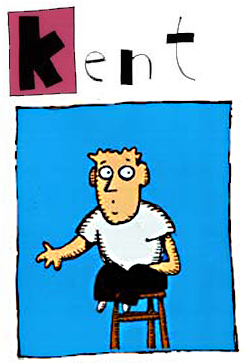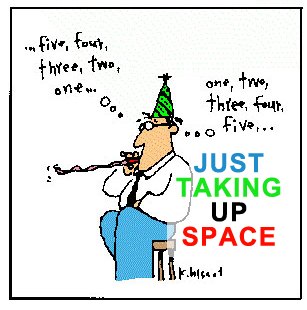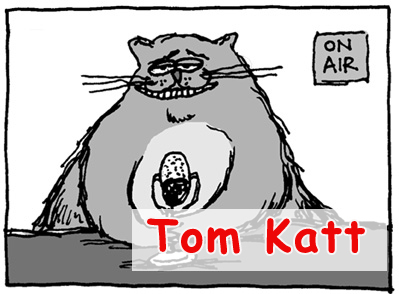Saturday, July 4, 1998
DULUTH, MN, USA -- Travels With Zelda — Baja Mexico has concluded. Zelda and I have returned to our humble little house on the North Shore of Lake Superior. From San Jose del Cabo at the Baja’s southernmost tip, it was a drive of eight days; eight, for the most part, uneventful days.
For the first 1200 miles I was fortunate to have the most welcomed company of my friend Linell, who, in opting to swap her return flight to San Francisco for the experience of driving Mex1, offered to share driving duties. (She also agreed to share the passenger seat with Zelda…actually, she gave up the passenger seat to Zelda, relegating herself to sitting on the cooler, between us.)
About a half hour out of Ciudad Insurgences, heading east along northern rim of the highly scenic Arroyo Santa Cruz we were confronted by a road tarring project. It seemed an innocent enough operation. For 15 minutes we slowly traversed the fresh tar, the familiar sound of asphalt debris lifted up by the van’s tires was in constant evidence. We crossed the summit of the spectacular Sierra de la Cicanta and rapidly descended to sea level and the coast of the azure Sea of Cortez. We rolled into the booming little town of Loreto for gas.
As usual in the Baja, there was a waiting line at the pumps. (Loreto has one gas station. And to put things in proportion, San Jose, a city of perhaps 20,000 inhabitants has only three gas stations.) As Linell and I inched forward we were met with obvious stares and devious grins. It has something to do with our van, we discerned. On gross inspection, the van and the white aluminum boat, Prez Ja, were coated with tar, which was still dripping, in the 95-degree heat, creating black oozing pools under the vehicles. The van was covered black up to the windows. Prez Ja now had a black hull. Like an acute epidemic, during our simple cursory inspection, tar insidiously attached itself to Linell’s and my clothes, shoes, and skin. It was my Exxon Valdez.
At the pump there was a young boy selling cassette tapes. His name was Javier. For 200 pesos ($24) he offered to clean both vehicles. Using the gas in our 2 ½ gallon gas can he told us it would take an hour. We drove him to his house, left the van parked on a dirt road in front of his house, and went for a leisurely taco lunch.
An hour later we returned to find the boat and van cleaned much better than either of us thought possible. True, they both would never be the same again, but that is how miles age a vehicle. That night we made it as far north as San Ignacio, home of the maestro mechanico Porfido.
I have never tired of driving Mex1. With the exception of the five hours between La Paz and Ciudad Insurgentes, the 23 hours it takes to drive its length is packed full of scenic wonderment and wistful vistas. The second day, Linell and I were intent on seriously putting miles behind us. This, however, did not mean we were not just as intent on enjoying the ride. She had never driven Mex1 and we dilly dallied here and there wallowing in the splendor. This and getting turned around in Ensenada put us in Tijuana around midnight. Nearing the border crossing we were pulled over by a black and white federale cop car. The ensuing conversation went something like this:
Federale: "Buenos noches. Habla español? No? You have no tail lights on your
boat trailer. You will have to accompany us to the police station to pay
your fine. Or you can pay me here." (He spoke in perfect English.)
PK: "How much is it?"
Fed: "$40"
PK: "$40?"
Fed: "Does she speak Spanish?" (looking at Linell who is leaning out the
passenger side window)
Linell: "A little." (the federale approaches Linell.)
Linell: "How much is the fine?"
Fed: "$20." (He says in English.)
We pay the fine on the spot.
The border crossing, even at one in the morning is bumper to bumper, six lanes across. We reach the customs agent after 45 minutes. He asks for my passport and asks Linell if she is also a citizen. She says she is, having been born in New Jersey, but spending most of her life in South Africa. He asks the usual questions and points us to the "further inspection" area. We drive forward, park at the end, and wait. There are 50 cars and not a custom agent in sight. We resign ourselves to a long early morning. I get out to stretch and remove the yellow note that the customs agent slipped under my wiper blade. Circled were "5 months" and "2 bottles." They seemed to think spending five months in the Baja and declaring only two bottles of tequila to be suspicious. (There was, to their credit, five bottles of tequila.) But it turned out to be a short wait. After about 15 minutes a customs agent approached the van with a dog. He lead the dog around the van and prompted Bowser to jump into the boat. The dog did so effortlessly. In two minutes we were driving north on I-5.
John Crawford had generously invited us to spend the night at his house in North San Diego. Even at 2 a.m. he was generous. I spent Saturday and Sunday in San Diego further cleaning the boat and regrouping, while Linell flew back to San Diego Sunday morning.
Early Monday morning I set off for Minnesota. Day 1 had me spending the night at a roadside rest on I-15 an hour into Utah. Day 2 took me through Utah, through Denver along what has to be America’s most scenic section of interstate, I-70, to another roadside rest off I-76 in northeast Colorado. Day 3 was spent traversing Nebraska, Iowa, and I-35 into Minneapolis where I arrived at my friend, Stan’s house in time for a much welcomed home-cooked meal and the Bulls-Jazz basketball game. I slept soundly in the van in his driveway. Day 4 was the hardest, even though it consisted of only a three-hour drive. My back was sore, as were my shoulders and upper arms. The dog was manic, panting, with her fur sticking out like a dog on a four-day bender. The road was as familiar as my own driveway. I had to take a nap half way to Duluth.
But the journey was soon to come to an end. Over 3000 miles as fast as I could reasonably drive it. The old Chevy van drove the whole way without so much as a cough. (It is a thirsty devil, however, as it delivered between 10-12mpg, depending on the wind.) Zelda began to pace frantically as we drove the final five miles along the shore of Lake Superior. She could not contain the barks and yelps that escaped from her fatigued body. The air that is cleansed by the cold, fresh water of Lake Superior is uniquely identifiable.
As we rolled into the driveway I was surprised at the progress of the gardens. The lupine were in bloom, the dandelions were already spent. I felt like a parent who had missed his child’s performance in the spring play. I was aware spring had come early to the Midwest, but I was not prepared for the evidence. Zelda bounded into the back yard, convinced there were squirrels to be chased from the bird feeders. She rolled in the cool green grass. I gave a final grandiose stretch, giving thanks to my guardian angel, her job now completed, and setting her free.
Once again, I would like to thank those who made this possible. I would also very much welcome comments, suggestions, or questions anyone Out There wishes to convey to me. I hope the very self-indulgent Travels With Zelda was able to provide at least the merest entertainment, and I sincerely thank all of you for your patronage and support. As, I’m confident, does Zelda.























